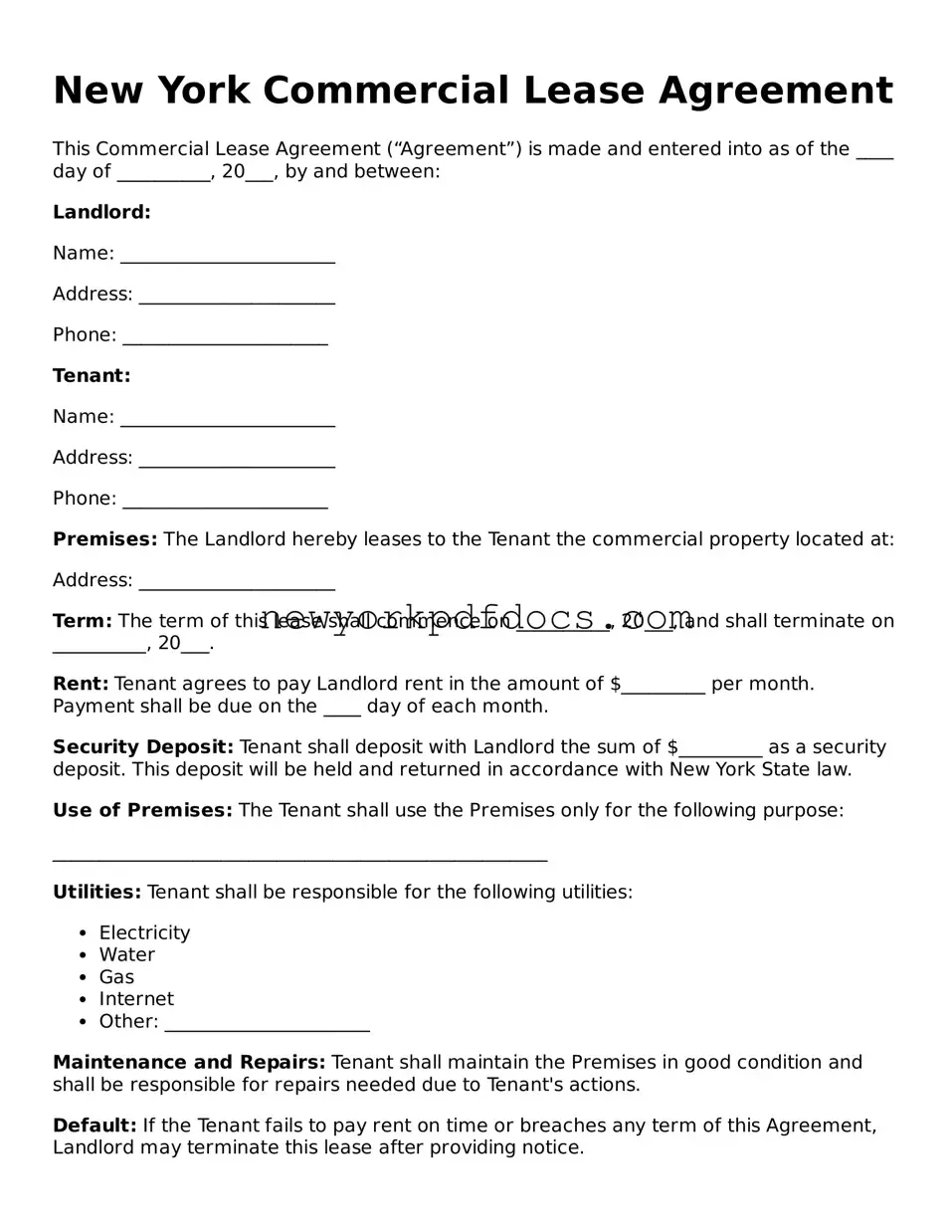New York Commercial Lease Agreement
This Commercial Lease Agreement (“Agreement”) is made and entered into as of the ____ day of __________, 20___, by and between:
Landlord:
Name: _______________________
Address: _____________________
Phone: ______________________
Tenant:
Name: _______________________
Address: _____________________
Phone: ______________________
Premises: The Landlord hereby leases to the Tenant the commercial property located at:
Address: _____________________
Term: The term of this lease shall commence on __________, 20___, and shall terminate on __________, 20___.
Rent: Tenant agrees to pay Landlord rent in the amount of $_________ per month. Payment shall be due on the ____ day of each month.
Security Deposit: Tenant shall deposit with Landlord the sum of $_________ as a security deposit. This deposit will be held and returned in accordance with New York State law.
Use of Premises: The Tenant shall use the Premises only for the following purpose:
_____________________________________________________
Utilities: Tenant shall be responsible for the following utilities:
- Electricity
- Water
- Gas
- Internet
- Other: ______________________
Maintenance and Repairs: Tenant shall maintain the Premises in good condition and shall be responsible for repairs needed due to Tenant's actions.
Default: If the Tenant fails to pay rent on time or breaches any term of this Agreement, Landlord may terminate this lease after providing notice.
Governing Law: This Agreement shall be governed by the laws of the State of New York.
Entire Agreement: This Agreement contains the entire understanding between the parties and supersedes all prior discussions or agreements.
IN WITNESS WHEREOF, the parties hereto have executed this Commercial Lease Agreement as of the day and year first above written.
Landlord's Signature: _________________________
Date: __________
Tenant's Signature: _________________________
Date: __________
